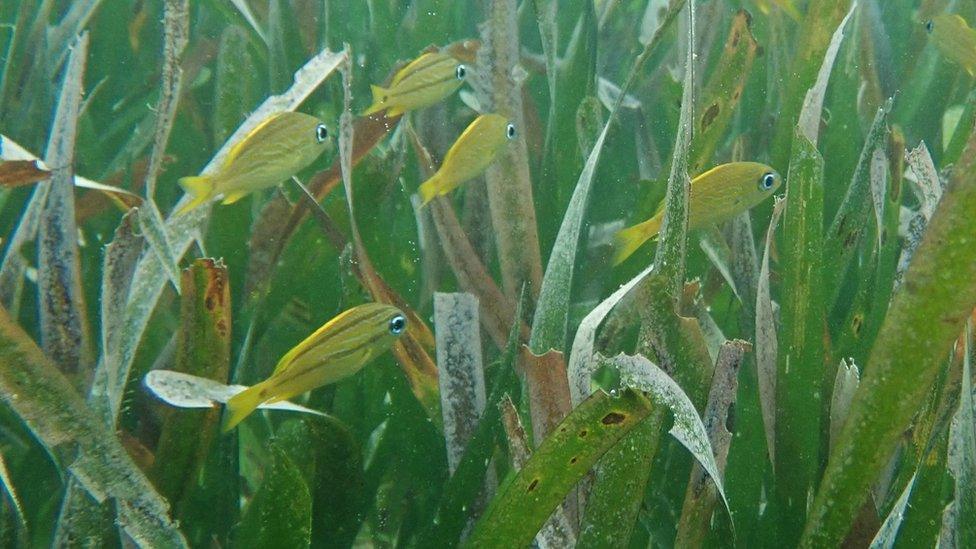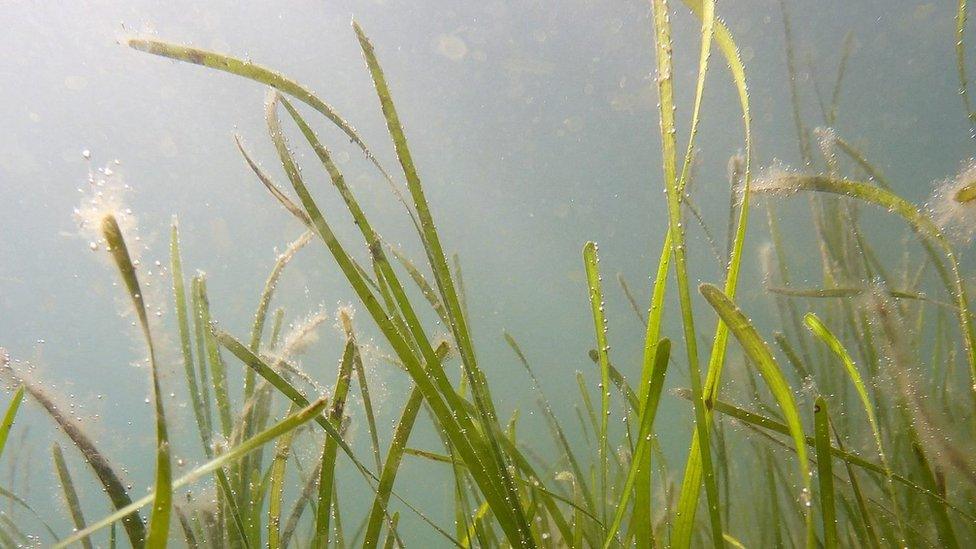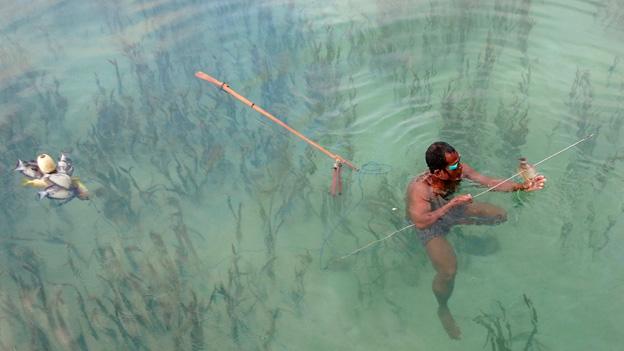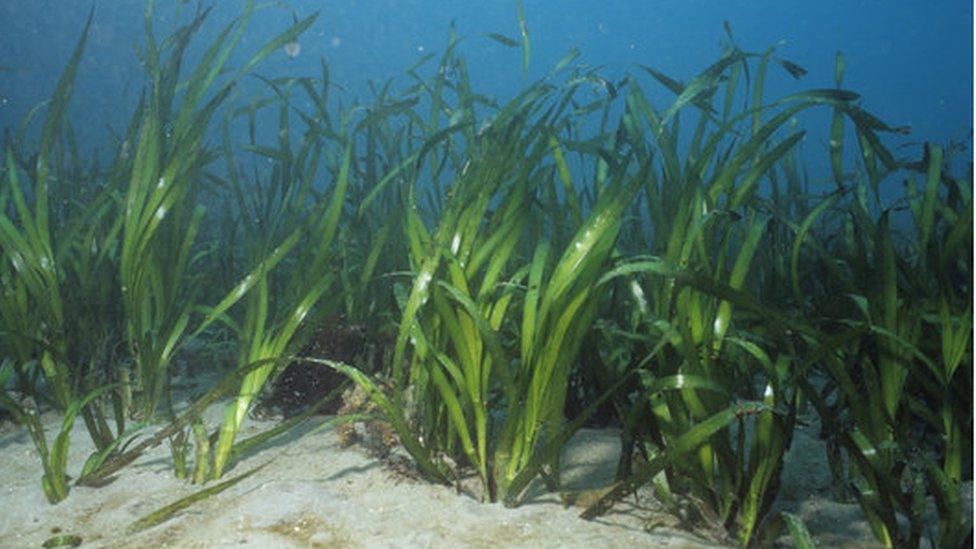Seagrass 'supports 20% of fisheries', Swansea Uni finds
- Published

Seagrass meadows support the production of a fifth of the world's largest fisheries, research shows
Popular fish for eating such as cod and pollock are reliant on the existence of healthy seagrass meadows, research led by Swansea University has found.
The meadows - areas of sea plants just off the coast - support the production of a fifth of the world's largest fisheries, the joint study with Cardiff and Stockholm universities showed.
Researchers called for better management of seagrass zones to protect the future of fish stocks they support.
Globally, the meadows are in decline.
Lead researcher Dr Richard Unsworth of Swansea University explained seagrass acted as a nursery habitat for fish stocks such as Atlantic cod, walleye pollock and tiger prawns.
The meadows also had a knock-on supportive effect to adjacent deep water habitats by providing a source of food to nearby fishery zones.
Dr Unsworth wants seagrass zones to be officially recognised and protected from threats such as land run-off, coastal development, boat damage and trawling.
"There is a global rapid decline of seagrass and when seagrass is lost there is strong evidence globally that fisheries and their stocks often become compromised with profound negative economic consequences," he said.
"To make a change, awareness of seagrass' role in global fisheries production must pervade the policy sphere."
Cardiff University researcher Dr Leanne Cullen-Unsworth, who also carried out work along with Stockholm's Dr Lina Mtwana Nordlund, added: "The chasm that exists between coastal habitat conservation and fisheries management needs to be filled to maximise the chances of seagrass meadows supporting fisheries, so that they can continue to support human wellbeing."
- Published16 February 2018

- Published17 November 2017

- Published24 April 2017

- Published13 January 2016
